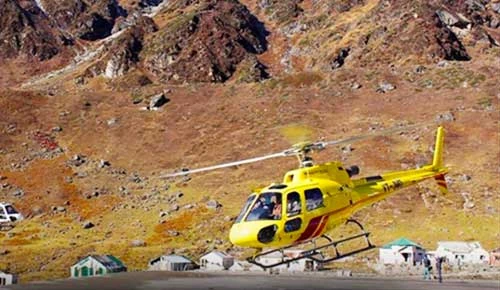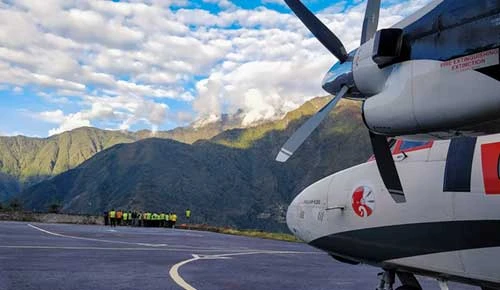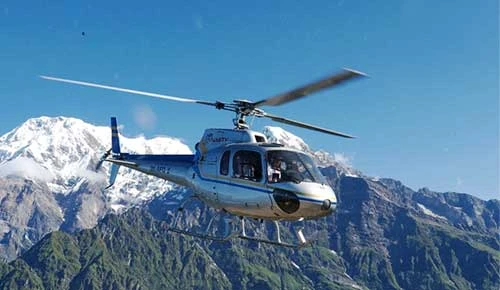Things to Know Before Traveling to Nepal
Nepal, a region of breathtaking mountains, ancient temples, and varied cultures, attracts people from all over the world with its unparalleled beauty and spiritual peace. This magnificent country, nestled in the Himalayas, provides a variety of experiences, ranging from exhilarating treks to tranquil meditation retreats.
However, visiting Nepal requires careful planning as well as knowledge of the country's distinct customs and challenges. Whether you desire adventure, cultural immersion, or spiritual enlightenment, Nepal offers a unique journey.
In this blog, we'll go over crucial ideas and insights to make your trip to Nepal not only memorable, but also safe and culturally appropriate.
Table of Contents
Planning Your Trip
When planning a trip to Nepal, there are a few important things to keep in mind to make sure the trip goes smoothly and is fun. For a great trip, you need to carefully plan everything, from when to go to when you need to know about visa requirements, recommended vaccinations, and the importance of travel insurance.
Best Time to Visit Nepal
Nepal's diverse landscapes and climates offer different experiences throughout the year. The best time to visit largely depends on your interests and activities planned. For trekking in the Himalayas, the peak seasons of spring (March to May) and autumn (September to November) offer clear skies, mild temperatures, and vibrant landscapes. These months provide optimal conditions for trekking enthusiasts to explore Nepal's renowned trails like the Everest Base Camp and Annapurna Circuit.

If you're more inclined towards cultural experiences and city tours, the shoulder seasons of autumn and spring are ideal. During these times, you can enjoy pleasant weather, fewer crowds, and vibrant festivals such as Dashain and Tihar.
However, if you're seeking quieter trails and lower prices, consider visiting during the off-peak seasons of summer (June to August) and winter (December to February). While summer brings monsoon rains and winter offers colder temperatures, these seasons still have their charms, including lush greenery in the summer and snow-capped landscapes in the winter.
Visa Processing and Requirements
Before starting on your journey to Nepal, it's essential to understand the visa processing requirements. Most travelers can obtain a visa upon arrival at Tribhuvan International Airport in Kathmandu or at land borders. The visa fees vary depending on the duration of your stay, ranging from 15 to 90 days.

For certain nationalities, visa applications may need to be processed in advance through the nearest Nepalese embassy or consulate. It's advisable to check the latest visa regulations and requirements well in advance of your travel date to ensure a smooth entry into the country.
Vaccination
Ensuring your health and well-being during your trip to Nepal is paramount. While no specific vaccinations are required for entry into Nepal, certain immunizations are recommended to protect against common travel-related illnesses.

Key vaccinations to consider include:
- Hepatitis A and B
- Typhoid
- Tetanus
- Polio
- Malaria (depending on your itinerary)
It's advisable to consult with a healthcare professional or travel clinic at least 4-6 weeks before your trip to discuss your specific vaccination needs based on your medical history, itinerary, and current health status.
Travel Insurance Importance and Coverage Options:
Travel insurance is a vital component of trip planning, offering financial protection and peace of mind in the event of unforeseen circumstances. In Nepal, where adventurous activities such as trekking and mountaineering are popular, having comprehensive travel insurance is essential.

Coverage options may include:
- Emergency medical expenses
- Evacuation and repatriation
- Trip cancellation or interruption
- Lost or stolen belongings
- Adventure sports and activities
Before purchasing travel insurance, carefully review the policy coverage, exclusions, and limitations to ensure it meets your specific needs and provides adequate protection for your planned activities in Nepal. Additionally, consider factors such as the duration of coverage, deductible amounts, and 24/7 emergency assistance services.
Cultural Insights
Anyone traveling to Nepal needs to learn about the culture. There are many different and interesting traditions, customs, and social norms in this country that affect how people act and engage every day. Understanding and accepting these cultural differences will not only make your trip better, but it will also help you connect with locals in a deeper way. Let's talk about some important cultural facts you should remember while you're traveling in Nepal.
Cultural Etiquette in Nepal

Nepal is deeply rooted in its traditions and values, which greatly influence social interactions. Here are some essential cultural etiquettes to observe:
- Nepalis typically greet one another with the traditional "Namaste" gesture, which entails a slight bow and palms pressed together in a prayer-like manner. This gesture reflects respect and humility.
- Modesty in attire is appreciated, especially in religious sites and rural areas. It's advisable to dress conservatively, covering shoulders and knees.
- Removing shoes before entering homes, temples, and monasteries is customary. Follow suit to show respect for the sacredness of these spaces.
- Public displays of affection, such as kissing and hugging, are not common in Nepali culture. It's best to refrain from such behavior in public places.
- Respecting elders is deeply ingrained in Nepali culture. Use respectful language and gestures when interacting with older individuals.
Respect for National Symbols, Including the Flag

Nepal's national symbols hold great significance and are revered by its people. The national flag, adorned with distinctive symbols, represents the country's identity and pride. It's important to show respect for the flag by:
- Avoid any acts that may disrespect or dishonor the flag, such as defacing or sitting on it,
- Standing in attention during the national anthem and hoisting or lowering of the flag.
- Refraining from using the national flag for personal or commercial purposes without proper authorization.
Significance of Using the Right Hand

In Nepali culture, the right hand is considered pure, while the left hand is associated with tasks like personal hygiene. Observing proper hand etiquette is crucial:
- Use the right hand for eating, giving and receiving items, and touching objects considered sacred.
- When offering or receiving something, use both hands or the right hand alone, never the left hand.
- Avoid pointing, gesturing, or touching others with the left hand, as it may be considered impolite.
Understanding the Sacred Status of Cows

Cows hold a sacred status in Hinduism, the predominant religion in Nepal. They are revered as symbols of purity and motherhood. As such:
- Avoid harming or mistreating cows, as it is considered deeply disrespectful.
- Be mindful of cows roaming freely on streets and pathways, especially in rural areas.
- Refrain from consuming beef out of respect for local customs and beliefs.
Nepali Cuisine and Dining Customs

Nepali cuisine is a delightful fusion of flavors influenced by its diverse geography and cultural heritage. Common dishes include:
- Dal Bhat: A staple dish consisting of lentil soup (dal), rice (bhat), and a variety of vegetable and meat curries.
- Momos: steamed or fried dumplings filled with meat or vegetables, typically served with spicy dipping sauces.
- Dhido is a traditional Nepali porridge made from buckwheat or millet flour, often accompanied by spicy accompaniments.
- It is customary to eat with your right hand, using utensils only when necessary.
- Accept food and drinks with both hands as a sign of gratitude.
- Always wait to be invited before starting your meal and ensure you finish everything on your plate, as wasting food is considered disrespectful.
Safety and Scams Awareness
When traveling to Nepal, ensuring your safety and awareness of common scams is important for a hassle-free experience. From navigating bustling streets to trekking through remote regions, understanding safety precautions can enhance your journey and protect you from potential risks. This section will delve into avoiding common scams, the importance of avoiding solo trekking, weather considerations, and transportation safety tips.
Avoiding common scams and tourist traps
Nepal, like many tourist destinations, has its share of scams targeting unsuspecting travelers. From overpriced souvenirs to fake tour operators, it's essential to stay vigilant. Be wary of individuals offering unsolicited assistance, particularly at popular tourist sites or transportation hubs. Research reputable tour companies and negotiate prices beforehand to avoid being overcharged. Additionally, beware of distraction techniques such as someone spilling something on you or engaging you in conversation while an accomplice tries to pickpocket you. Trust your instincts and politely decline any offers or services that seem suspicious.

Importance of Avoiding Solo Trekking
Nepal has beautiful scenery that might make people want to go on an adventure by themselves, but hiking alone can be very dangerous. Solo trekking is naturally dangerous because of the remote trails, unpredictable weather, and lack of access to emergency help. Choose guided trips or participate in group tours, where knowledgeable guides will assist you in navigating the terrain and offering support in the event of emergencies. Traveling with other people makes you safer and adds to the experience by letting you share moments and help each other out. Remember that safety should always come first, even if it means giving up the fun of exploring on your own.

Weather considerations and safety precautions
Nepal has a wide range of landscapes, from lush valleys to high mountains. Each has its own weather patterns and possible dangers. Before you go outside and do something, you should learn about how the weather changes with the seasons and the local forecast. Bring the right clothes and gear for the weather, like strong shoes, layers that will keep you dry, and sun protection. Always bring the things you need, like water, snacks, a first-aid kit, and a fully charged phone that you've saved with emergency contacts. Be ready to change your plans if the weather changes, and never forget how powerful nature's uncertainty can be.

Transportation options and safety tips
Navigating Nepal's roads and transportation systems requires caution and awareness. Whether traveling by bus, taxi, or hired vehicle, prioritize safety over convenience. Opt for licensed and reputable transportation services, and confirm fares or negotiate prices in advance to avoid disputes. Exercise caution when crossing streets, as traffic can be chaotic and pedestrian crossings may be scarce. If renting a vehicle or motorcycle, ensure you have the necessary permits and insurance coverage. Stay vigilant for pickpockets and keep your belongings secure while using public transportation. By staying alert and taking necessary precautions, you can enjoy smooth and safe travels throughout Nepal.

Budgeting and Expenses in Nepal
Nepal is renowned for its stunning landscapes, vibrant culture, and rich heritage, making it a popular destination for travelers on various budgets. Understanding the costs involved and planning your expenses accordingly can enhance your experience while ensuring you make the most of your trip. Here's a detailed look at budgeting and expenses in Nepal, including tips for managing costs, trekking expenses, and budget-friendly activities.
A. How Expensive is Nepal? Budgeting Tips and Cost Breakdown

Nepal is generally considered a budget-friendly destination, offering affordable accommodation, food, and transportation options. However, costs can vary depending on your travel style and preferences. Here's a breakdown of key expenses to consider:
- Accommodation: Budget travelers can find guesthouses, hostels, and homestays for as low as $5–15 per night. Mid-range hotels and resorts range from $20 to $50, while luxury accommodations can cost $100 or more per night.
- Food: Local eateries and street food stalls offer affordable meals for as low as $2–5. Restaurants catering to tourists may charge $15–30 for a meal. Be sure to try local specialties like momos (dumplings) and dal bhat (rice and lentils).
- Transportation: Public buses are the cheapest way to travel between cities, with fares starting at $10–$50. Taxis and private cars are also available, with prices varying based on distance and negotiation skills.
- Activities: Entrance fees for popular attractions range from $20 to $30. Guided tours and trekking packages vary in cost, with budget options available for independent trekkers.
Planning Your Trekking Routes and Associated Costs

Trekking is a highlight of many trips to Nepal, offering breathtaking views of the Himalayas and a chance to experience the local culture up close. Here are some factors to consider when budgeting for a trek:
- Permit Fees: Some treks require permits, which can range from $20 to $50 depending on the region and duration of your trek.
- Guide and Porter Costs: Hiring a guide is recommended, especially for high-altitude treks. Guide fees typically range from $20 to $30 per day, while porter fees range from $15 to $25 per day.
- Accommodation and Food: Tea houses along popular trekking routes offer basic accommodation and meals for around $10–20 per day.
- Equipment Rental: If you don't have your own trekking gear, you can rent equipment like sleeping bags, trekking poles, and jackets for a reasonable fee.
Learning Opportunities and Budget-Friendly Activities

Nepal offers a wealth of learning opportunities and budget-friendly activities for travelers looking to immerse themselves in the local culture:
- Visit temples, monasteries, and heritage sites to learn about Nepal's rich cultural heritage. Many of these attractions have affordable or donation-based entry fees.
- Participate in cooking classes, yoga retreats, or meditation sessions to learn more about Nepali culture and traditions.
- Consider volunteering with local organizations to give back to the community and gain a deeper understanding of Nepali life.
- Explore Nepal's natural beauty through hiking, biking, or jungle safaris, which can be done independently or with a tour group.
Conclusion
Nepal offers breathtaking landscapes, rich culture, and warm hospitality, making it an ideal destination for travelers. To ensure a smooth and memorable trip, respect local customs, avoid solo trekking, and be aware of common scams. Embrace the local cuisine, budget wisely, and consider travel insurance, visas, and vaccinations. With its diverse climatic zones and unique culture, Nepal promises an unforgettable adventure for those willing to explore its beauty.








